As the monsoon begins, plans of various treks, one-day picnics, long weekend holidays start filling up our fridge doors and planners. The whole week goes in the excitement of the planned trip coming weekend. The weather suddenly starts loving us and becomes the most graceful version of itself. The lush greens start filling up every space around and in your heart.
Unfortunately, this year, the scenery has changed upside down. Though the weather is still pleasant, it is unsafe for us to go out on vacations. Monsoon is arriving and we are craving for getting out in the pitter-patter. As we continue to take care of ourselves and be safe inside our homes, a little future planning never hurts. Let us all hope the good old times are back again and keep our monsoon holiday plans ready.
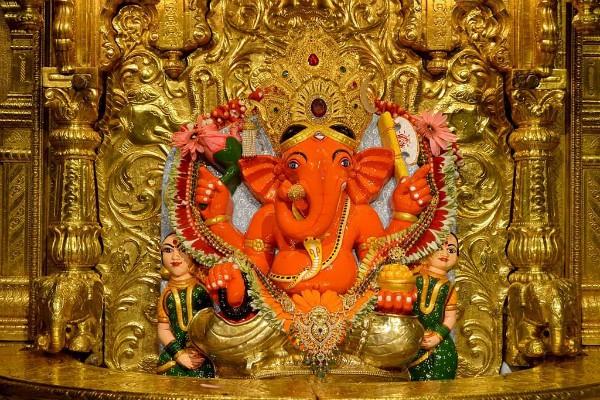
The most visited locations in monsoon season are the Ashtavinayak temples. Ashtavinayak is a Sanskrit word which means eight Ganpati. All the eight temples are of Lord Ganesha, the Hindu god of learning and prosperity. The Ashtavinayak yatra is considered very holy for all Hindus. The temples are situated around Pune and the yatra is usually a three-day trip.
1. Mayureshwar
- Location: Morgaon, Pune
- Distance from Pune: 66 km
- Major Attraction: Idol sits on a statue of a peacock
The first temple to be visited on Ashtavinayak yatra is Mayureshwar situated in Morgaon. The idol of Lord Ganesha in this temple is riding a peacock hence the name has been derived. There is an idol of Nandi in front of Lord’s idol which is usually found only in Lord Shiva’s temples.
The temple walls are 5 feet high and have four minarets (pillars) at each corner making it look like a mosque from a distance. The architecture was built in such a way that the Mughals could not identify it as a temple and approach to destroy it.
The name Mayureshwar and Morgaon come from the belief that the village was home to hundreds of peacocks. Even the village’s outline is in the shape of a peacock. Mayureshwar is considered as the most important temple of Ashtavinayak and should be visited twice to complete the yatra.
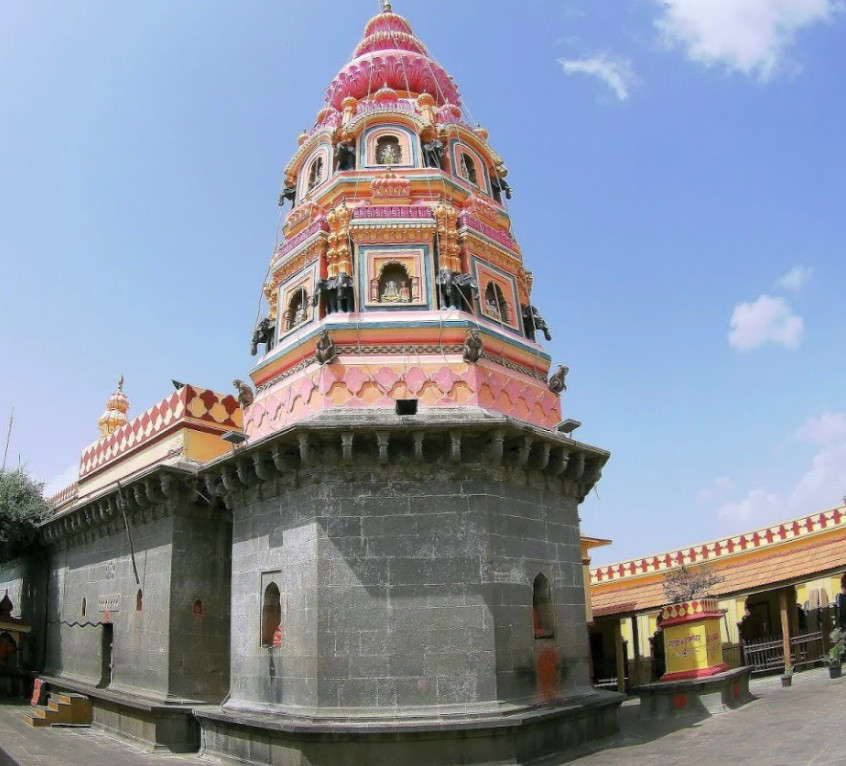
2. Siddhivinayak
- Location: Siddhatek, Ahmednagar
- Distance from Pune: 98.9 km
- Major Attraction: Road is built by Maratha General, Haripant Phadake
Siddhivinayak temple in Siddhatek is considered as the second temple to be visited in Ashtavinayak Yatra. It is believed that Lord Vishnu fought the asuras Madhu and Kaitabha after establishing this temple.
Out of all the temples, the only idol with a right-sided trunk is found in Siddhatek temple. To complete one Pradakshina of the temple, pilgrims have to complete a round of the hillock the temple is situated on. The temple and lord’s idol face north in Siddhivinayak.
Apart from mythological history, the temple is connected to the Maratha Empire as well. The road to the temple was built by the Maratha general Haripant Phadake after he found victory in the war of Badami Castle. The road was built by the stones, Maratha general brought from the Badami Castle as a gift to the blessings he sought from Lord Ganesha in Siddhatek.
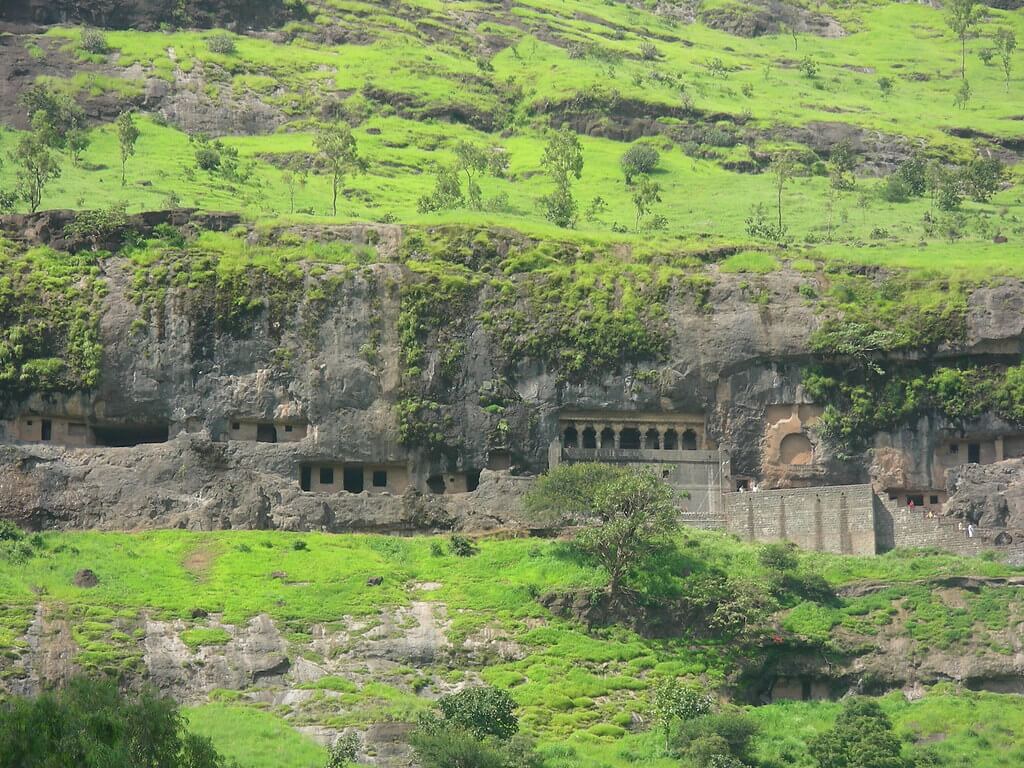
3. Ballaleshwar
- Location: Pali, Raigad
- Distance from Pune: 123.9 km
- Major Attraction: Built in the memory of devotee of Lord Ganesha
This temple has a mythological story bound to it. The temple was built in the memory of a devotee of Lord Ganesha named Ballala. He was beaten by the villagers and his father to be such a strict devotee of Ganesha. While the violence started increasing, it is believed lord himself came upon earth to save his devotee.
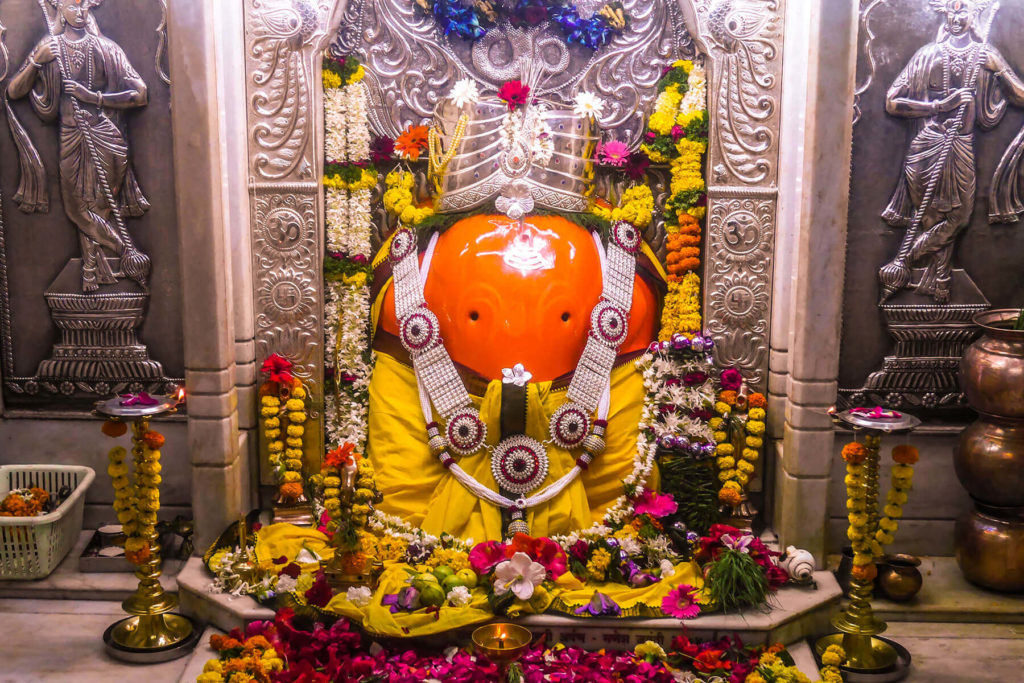
Ballaleshwar temple was originally constructed from wood which was later reconstructed from stones by Nana Phadanvis in 1760. The temple faces east and has two sanctums. Along with the idol of Ganesha, there is also a statue of Mushak (mouse) holding a Modak (Indian sweet).
4. Varadvinayak
- Location: Mahad, Raigad
- Distance from Pune: 89.1 km
- Major Attraction: Idol originally found in a nearby river
The idol of Lord Ganesha in Mahad is called Varadavinayak, which means the giver of bounty and success. The idol which now resides in the temple with complete glory was originally found in a nearby river, half immersed. Hence the statue has a slightly weathered look. The trunk turns right of Varadvinayak idol. The idol was found by Mr Dhondu Paudkar in 1690 AD while it was established in the temple much later in 1725 ad by Mr Ramji Biwalkar. After the temple was constructed, the Subhedar of those days decided to establish a village around and thus the Mahad village came into being. There are multiple religious stories and miracles attached to the Varad Vinayak statue, usually spoken by the locals and pandits in the temple.
5. Chintamani
- Location: Theur, Pune
- Distance from Pune: 26.9 km
- Major Attraction: Diamond studded idol
After Lord Ganesha brought back the precious jewel called Chintamani from asuras for sage Kapila, The sage gifted two diamonds to the lord which now rest on his trunk. This incident took place under the Kadamba tree hence the village was also called Kadamb Nagar in old times. The wooden wall outside the temple is believed to be built by the Peshwas. The idol faces east while the entrance of the temple faces north in Chintamani temple.
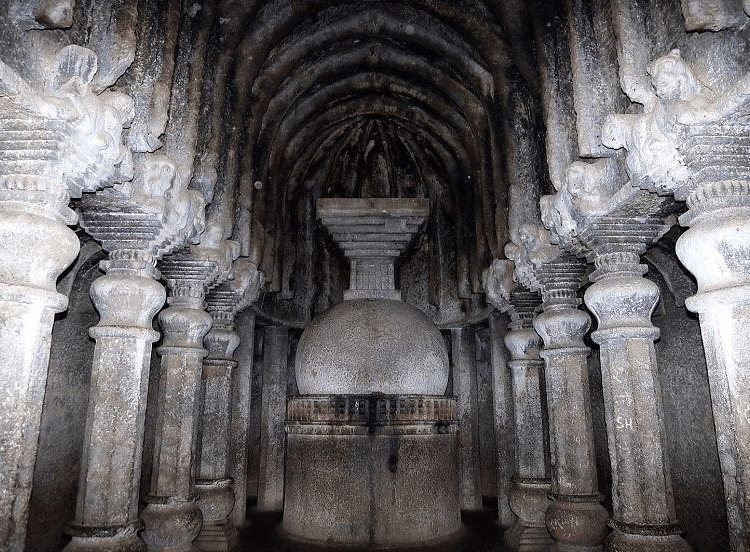
6. Girijatamaj
- Location: Lenyadri, Pune
- Distance from Pune: 100.6 km
- Major Attraction: Idol situated in Buddhist caves
This temple is the most unique temple of all. The temple is one of the 18 Buddhist complex caves and stands eighth in ascending order. The temple faces south while the deity faces north and his trunk is left-sided. The temple is carved out of one huge stone and has 307 steps leading to it. There is no electricity in the temple. Still, the temple is built in such a way that it is always lit during the day. There are no supporting pillars in the temple which still amazes the visitors. Even the statue is a bit different as compared to the others. It is not very well carved like the other Vinayaka. The famous Shivneri fort is at a distance of 5-6 km from the temple.
7. Vighneshwar
- Location: Ozar, Pune
- Distance from Pune: 85 km
- Major Attraction: Idol called as Vighneshwar Vinayak
The idol in this temple is called as Shri Vighneshwar Vinayak. The story behind this title of Ganesha is in the times Ganesha destroyed all that created obstacles in holy offerings. The asura Vighnasur was created by Lord Indra to disturb the royal offerings to deities. Lord Ganesha fought Vighansur and defeated him. He asked for a favour that his name should always be taken before the lord’s name. Hence the name came to be.
The temple is 20 feet long. It has a thick stone wall surrounding it. The trunk of Ganesha sides on the left and there are rubies as eyes in this statue.
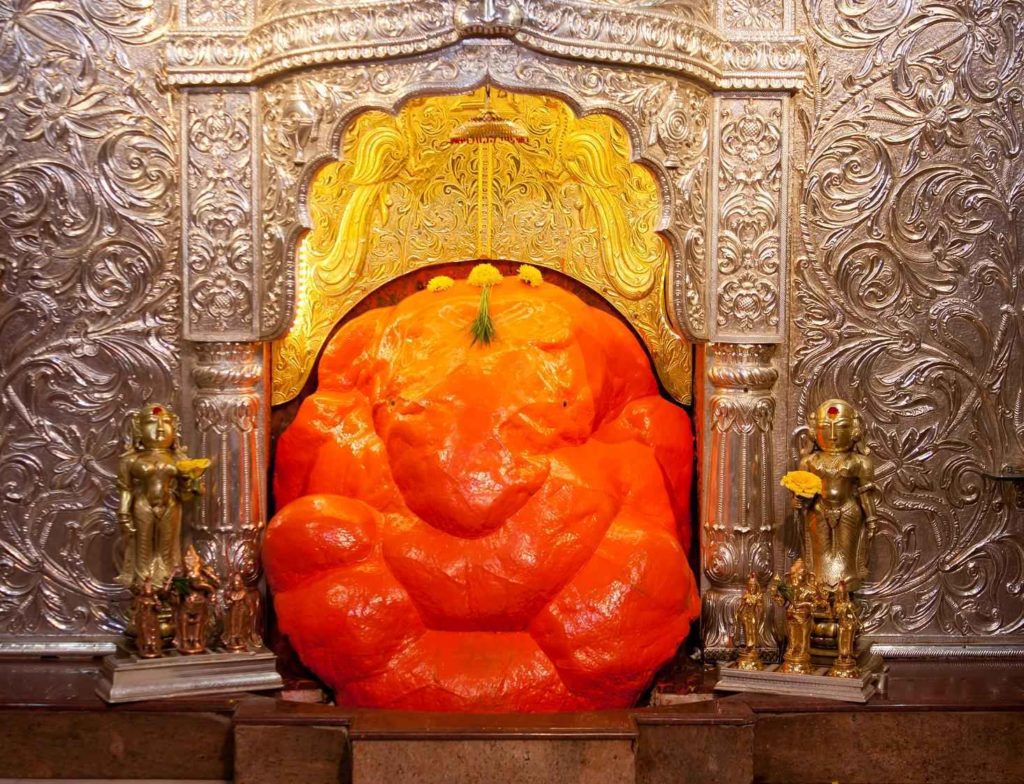
8. MahaGanapati
- Location: Ranjangaon, Pune
- Distance from Pune: 128.3 km
- Major Attraction: Idol built by Lord Shiva
Mahaganpati of Ranjangaon is the eight and last Ashtavinayak. This temple is believed to be established by Lord Shiva himself. When Lord Shiva set out to fight demon Tripurasura, he took blessings from Lord Ganesha in this temple. The town lord shiva set up around the temple was called as Manipura now known as Ranjangaon.
The idol of Lord Ganpati has statues of his wives Riddhi Siddhi seated beside him. His trunk turns left. It is also believed that the real idol is hidden somewhere in the vault behind. It is a common belief among the locals that the real idol has 20 trunks and 20 arms. But the belief is not yet proven.
The temple was reconstructed by the Peshwas and Peshwa Madhav Rao looked after the well being of pilgrims visiting the temple.
Ashtavinayak Yatra is completed after a pilgrim visits all the eight Ganesha temples and pays his tribute one again at Mayureshwar. Ashtavinayak yatra is a popular religious tour choice in all the seasons. But, still the lush greens that decorate the outskirts of temples are heavenly sceneries to watch in monsoon and attracts more tourists. The pleasure of long drives and family vacations is the highest up in this religious tour. If you are planning to have a short family tour, this is a perfect choice.
Many unknown pages of mythological history open as you linger around the walls of these beautiful ancient temples. It is a tour closer to our roots and far from the city hustle. Your trip can make memories that will never fade just like these temples and their stories!






